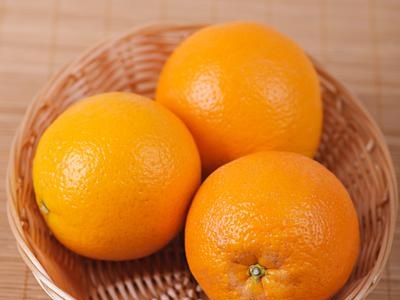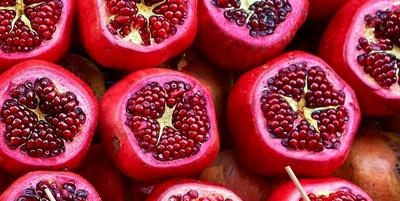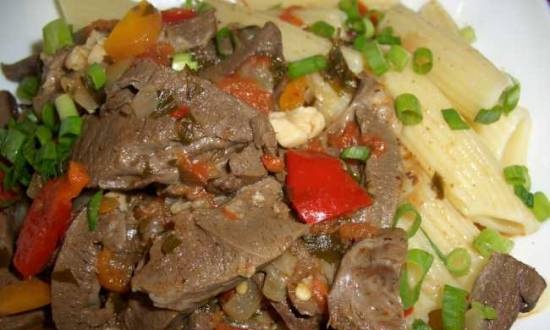|
 It is said that nowhere is oranges tastier than on the island of Trinidad. But they never appear in European markets. It is said that nowhere is oranges tastier than on the island of Trinidad. But they never appear in European markets.
The trouble with these fruits is their appearance. Nature cheated them. Instead of the usual orange color, the fruits remain poisonous green, as if unripe. Moreover, there are yellow smeared spots on the green background. Like a disease. They buy them with caution when there are no orange ones at hand.
The buyer appreciates the product primarily for its appearance. The orange must first please the eye and then the stomach.

Of course, from the point of view of health and benefits for humans, the color of the peel does not play any role. Oranges have other, more important flaws. And first of all, their chilliness. Orange is a tropical inhabitant. And it is grown most often in the subtropics. And here frosts happen, and considerable ones. In 1709, the Mediterranean was so cold that all the orange groves were completely frozen. I had to plant it all over again. Weaker frosts occur more often, almost every twenty years. And the evergreen beauties are dying.
But gardeners do not give up. They think about peaches. Those have only ten years of productive life! And they still consider it beneficial to plant. And here it is almost twice as much. But the trouble is that the evergreen creature takes too long to mature. It gives the first flowers when it is two or three years old, but a real, big harvest - by the age of twenty! And then the frost. Reducing the period of maturation is the main task that breeders have set themselves.
Of course, you cannot imagine an orange as a collection of imperfections. It also has beneficial aspects that other fruit trees do not have. It does not require storage for storing fruit for future use. The fruits, when ripe, are stored directly on the tree. The Spaniards were the first to notice. They began to enhance the beneficial quality and achieved that the fruits were stored on the tree all year round! Probably, it is possible to lengthen the shelf life, but the trouble is: over time, the fruits begin to lose their aroma, juiciness and sugar content. And most importantly, there are fewer new, fresh ones.

There is a lot of controversy about the peel. What should she be - thick or thin? Experts say that a thick peel is an extra ballast and is unprofitable for the buyer, but it is good when transported over long distances: the fruits do not suffer so much.
Knowing this rule, we were very surprised when we met in Algeria, on the edge of the Sahara, a farmer selling oranges. We were driving then from the capital of the country to the town of Bou Saada. The farm stood on a pole road along which hundreds more of the same tourist buses from all over the world hurried to Bou Saada. The farmer set up a table right by the road and laid out his produce on it. He had two varieties of oranges. Some were thin-skinned (for the sample he cut one at a time!), Others with a thick peel that occupied most of the fruit and only a little pulp remained in the center. What surprised us was that thin-skinned ones cost less, thick-skinned ones more.
- You were not mistaken in setting the price? One of our women asked playfully in French.
“No, madam,” he answered. “That's right. Pachyderms are Jaffa oranges.
We did not know then what kind of Jaffa. And they chose thin-skinned ones. And only that our companion, who asked, took a couple of Jaffa for a sample.
How sorry we were afterwards that we had not taken Jaffa! The thin-skinned ones were so sour that it cracked their cheekbones. But the taste of Jaffa was incomparable. As I later found out, this variety was a descendant of the famous Arab Bellada variety. Its a kidney mutation.
In our subtropics, if an orange is successful, it is in the very extreme south, near Batumi. But the tangerine grows well. Professor A. Krasnov "spotted" it in Japan and brought it along with other "gifts of the East" at the end of the last century. In Japan, where oranges are also difficult to manage, there is a real tangerine kingdom.The Japanese harvest on their islands almost half of the world's harvest of these fruits.
Quite unexpectedly, at the end of the last century, orange and tangerine had a competitor - grapefruit. Nobody knows where it came from.
According to rumors, a bitter citrus called Pomelo was once introduced to the West Indies. The taste of Pomelo was inferior to an orange, but its size was amazing. Its fruits were almost three times larger. The grapefruit is thought to be a hybrid of Pomelo and orange. From the first he inherited the size of the fetus. And he acquired a hitherto unknown property from citrus - to give fruits in bunches, like grapes.

But if the appearance of the newly appeared citrus was seductive, then the same could not be said about its internal qualities. The flesh turned out to be bitter, pale-whitish in appearance. And on top of that, a lot of seeds. However, citrus growers have tried to improve the grape-like creature. They finished off the seeds first. Then the fruits with pink pulp were selected. In 1913, on the white meat variety Marsh, they saw a branch that gave pink fruits, and created the pink meat variety Thompson. Then it was possible to bring out varieties with dense red pulp and even with red skin. As a result, the fruit began to look like a pink-cheeked peach.
Bitterness remained. It was liquidated quite quickly. And then the unexpected happened. The buyers refused to take fruits without bitterness. They seemed insipid, like wet cotton wool. Therefore, in modern varieties, a small bitterness is preserved. However, people had different tastes about bitterness. Some people don't like it.
And that's what it led to. In the 1930s, there was a grapefruit boom. The plantings of new citrus began to grow like mushrooms after rain. This darling of fate only half began to yield to the old well-deserved orange and four times overtook the lemon. The owners of the orange groves watched the dashing onslaught of grapefruit with spiritual trepidation. Will it displace traditional goods from the market? However, this did not happen.
After the war, the orange pulled ahead again and gave twice the harvest. The lemon also doubled its ranks. And the grapefruit remained the same. Its area has increased by the smallest. And almost all over the world they are eaten if there is no sweet orange at hand. Not everyone likes the bitterness in these fruits, even when cut in half and sprinkled with sugar.
A. Smirnov. Tops and roots
|
 It is said that nowhere is oranges tastier than on the island of Trinidad. But they never appear in European markets.
It is said that nowhere is oranges tastier than on the island of Trinidad. But they never appear in European markets.








































































































































































































